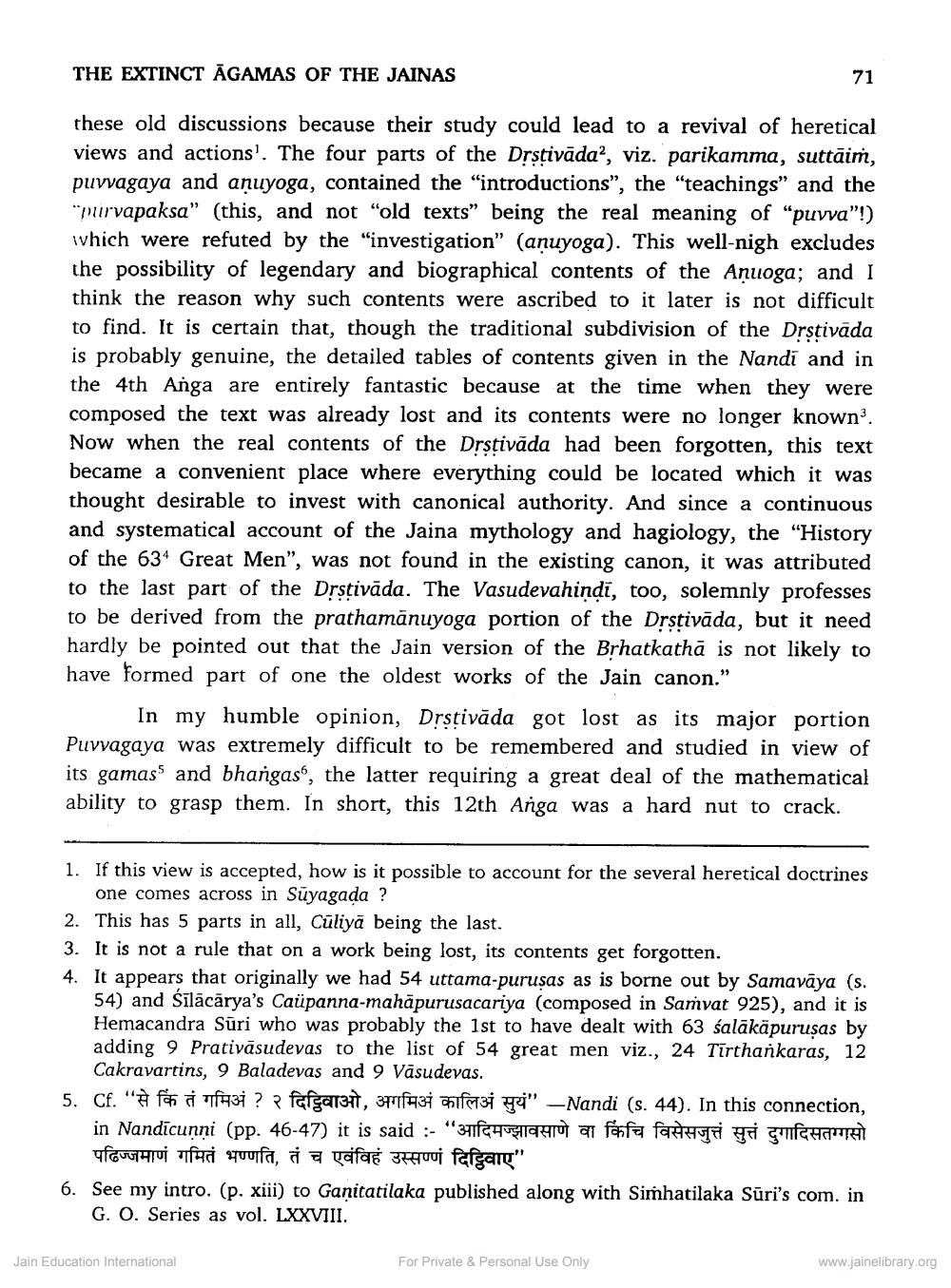________________
THE EXTINCT ĀGAMAS OF THE JAINAS
71
these old discussions because their study could lead to a revival of heretical views and actions. The four parts of the Drstivāda?, viz. parikamma, suttaim, puvvagaya and anuyoga, contained the "introductions”, the “teachings” and the "purvapaksa" (this, and not "old texts” being the real meaning of “puvva"!) which were refuted by the “investigation” (anuyoga). This well-nigh excludes the possibility of legendary and biographical contents of the Aņuoga; and I think the reason why such contents were ascribed to it later is not difficult to find. It is certain that, though the traditional subdivision of the Drstivāda is probably genuine, the detailed tables of contents given in the Nandi and in the 4th Anga are entirely fantastic because at the time when they were composed the text was already lost and its contents were no longer known?. Now when the real contents of the Drstivāda had been forgotten, this text became a convenient place where everything could be located which it was thought desirable to invest with canonical authority. And since a continuous and systematical account of the Jaina mythology and hagiology, the “History of the 634 Great Men”, was not found in the existing canon, it was attributed to the last part of the Drstivāda. The Vasudevahindi, too, solemnly professes to be derived from the prathamānuyoga portion of the Drstivāda, but it need hardly be pointed out that the Jain version of the Brhatkathā is not likely to have formed part of one the oldest works of the Jain canon."
In my humble opinion, Drstivāda got lost as its major portion Puvvagaya was extremely difficult to be remembered and studied in view of its gamass and bhangas, the latter requiring a great deal of the mathematical ability to grasp them. In short, this 12th Anga was a hard nut to crack.
1. If this view is accepted, how is it possible to account for the several heretical doctrines
one comes across in Süyagada? 2. This has 5 parts in all, Cūliyā being the last. 3. It is not a rule that on a work being lost, its contents get forgotten. 4. It appears that originally we had 54 uttama purusas as is borne out by Samavāya (s.
54) and Sīlācārya's Caüpanna-mahāpurusacariya (composed in Samvat 925), and it is Hemacandra Sūri who was probably the 1st to have dealt with 63 salākäpurusas by adding 9 Prativāsudevas to the list of 54 great men viz., 24 Tīrthankaras, 12
Cakravartins, 9 Baladevas and 9 Vāsudevas. 5. Cf. fch 731 ? Pfafgarsit, m431 of 131 qa" - Nandi (s. 44). In this connection,
in Nandīcunni (pp. 46-47) it is said :-"3414 4r ar fáfa fa i gmfHIET
पढिज्जमाणं गमितं भण्णति, तं च एवंविहं उस्सणं दिदिवाए" 6. See my intro. (p. xiii) to Ganitatilaka published along with Simhatilaka Sūri's com. in
G. O. Series as vol. LXXVIII.
Jain Education International
For Private & Personal Use Only
www.jainelibrary.org




